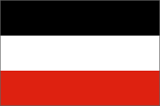
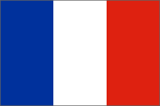 I. CASE BACKGROUND
I. CASE BACKGROUND
| France, Germany and the Struggle for the War-making Natural Resources of the Rhineland Sam Henze |
I.
Case Background |

 I. CASE BACKGROUND
I. CASE BACKGROUND
Between the years 1870 and 1945 France and Germany fought three wars, each war escalating in destructive magnitude, political scope and geographic extent. The primary reason for these wars was strategic and political: a dynamic and increasingly powerful Germany expanding into the sphere of influence of a declining French empire. However, for either country to achieve its political aims it required an industry capable of producing and powering the tools of geopolitical expansion: ships, guns and railroads. Essential to this industry were coal and steel. The control of natural resources essential for war-making, specifically the coal and iron ore of the upper and lower Rhineland, was one of the primary aims of boths the wars and the peace settlements that followed each. Indeed, the it was the struggle for resources in the peace settlements that fueled further conflict. In this case study I will examine this conflict over war-making resources. I will also investigate the paradigm shift that occurred after World War II, when the establishment of the European Coal and Steel Community reflected a change in the way the two countries regarded natural resources and their relationship to national security.
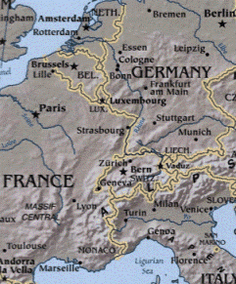 2. Description
2. Description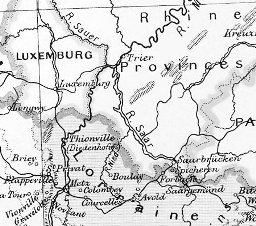 While the goal of each antagonist in the Franco Prussian war of 1870-1871 was not explicitly the occupation of territory rich in natural resources, the purpose of the concluding Treaty of Frankfort of 10 May 1871 certainly was. Along with indemnity payments meant to hamstring French investments in industry, the French province of Alsace and most of Lorraine were annexed by a newly united Germany. This transferred an estimated 2 billion tons of iron ore into German hands along with Lorraine's iron smelters.(Berglund, 531) Freed fom having to pay high prices for imported French ore,
German iron and steel production flourished between 1871 and 1918, outstripping French production by a factor of three.(Munro, 7) Germany's industrial take-off of the late 1800's in turn fueled its military might and geo-political influence, allowing it to pursue its dream of building a Mitteleuropa to challenge the erstwhile continental hegemony of France. (Soutou, 21)
While the goal of each antagonist in the Franco Prussian war of 1870-1871 was not explicitly the occupation of territory rich in natural resources, the purpose of the concluding Treaty of Frankfort of 10 May 1871 certainly was. Along with indemnity payments meant to hamstring French investments in industry, the French province of Alsace and most of Lorraine were annexed by a newly united Germany. This transferred an estimated 2 billion tons of iron ore into German hands along with Lorraine's iron smelters.(Berglund, 531) Freed fom having to pay high prices for imported French ore,
German iron and steel production flourished between 1871 and 1918, outstripping French production by a factor of three.(Munro, 7) Germany's industrial take-off of the late 1800's in turn fueled its military might and geo-political influence, allowing it to pursue its dream of building a Mitteleuropa to challenge the erstwhile continental hegemony of France. (Soutou, 21) 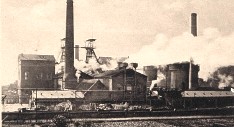 The German victory in 1871 and subsequent annexation of Lorraine and Alsace did more than just cripple France's industry. France was forced to recognize the importance of coal and iron production for producing the armaments that were the primary lever of geopolitical power. (Munro, 9) This put France in an economic and strategic conundrum. It still possessed great iron ore deposits in the area of Lorraine not annexed by Germany. However, due to a relative dearth of coal and inefficiencies in its metallurgic industry, France could not use all of the ore that it could mine. To buy coal, France needed money and its easiest way to get money was to sell its surplus iron ore. Germany, with a surplus of coal relative to iron despite the annexed resources of Lorraine, was the obvious customer, yet to export iron ore to Germany was to fuel Germany's war-making capabilities. (Soutou, 180-189) While a stagnating French economy fed the French population's revenge fever for the humiliating annexation of "French" territory, the French administrative and political classes were developing a solution for France's relative lack of coal.
The German victory in 1871 and subsequent annexation of Lorraine and Alsace did more than just cripple France's industry. France was forced to recognize the importance of coal and iron production for producing the armaments that were the primary lever of geopolitical power. (Munro, 9) This put France in an economic and strategic conundrum. It still possessed great iron ore deposits in the area of Lorraine not annexed by Germany. However, due to a relative dearth of coal and inefficiencies in its metallurgic industry, France could not use all of the ore that it could mine. To buy coal, France needed money and its easiest way to get money was to sell its surplus iron ore. Germany, with a surplus of coal relative to iron despite the annexed resources of Lorraine, was the obvious customer, yet to export iron ore to Germany was to fuel Germany's war-making capabilities. (Soutou, 180-189) While a stagnating French economy fed the French population's revenge fever for the humiliating annexation of "French" territory, the French administrative and political classes were developing a solution for France's relative lack of coal.
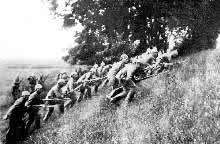 The war on the Western Front from August 1914 to November 1918 was largely a war between Germany and France, as the casualty figures attest. As with the Franco-Prussian War of 1871, the "Great War" that was to become World War I broke out due to geo-political competition on the European continent. Yet as early as the autumn of 1914, members of the French government were defining war aims as the destruction of German industrial power through the occupation and even annexation of the Rhineland's coal regions. The Saar would be suitable for annexation, while the lower Rhine region of the Ruhr would be put under international protection administered by France, with troops present if need be. France could at one stroke destroy Germany economic and military hegemony, while re-establishing itself as the greatest continental power. One French minister even suggested the removal of "the population of the Palatinate, who hate France, so as to create a vaste area of expansion for the latin race". (Soutou, 171-177)
The war on the Western Front from August 1914 to November 1918 was largely a war between Germany and France, as the casualty figures attest. As with the Franco-Prussian War of 1871, the "Great War" that was to become World War I broke out due to geo-political competition on the European continent. Yet as early as the autumn of 1914, members of the French government were defining war aims as the destruction of German industrial power through the occupation and even annexation of the Rhineland's coal regions. The Saar would be suitable for annexation, while the lower Rhine region of the Ruhr would be put under international protection administered by France, with troops present if need be. France could at one stroke destroy Germany economic and military hegemony, while re-establishing itself as the greatest continental power. One French minister even suggested the removal of "the population of the Palatinate, who hate France, so as to create a vaste area of expansion for the latin race". (Soutou, 171-177)
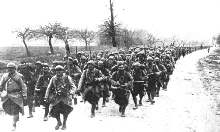 During the negotiations that became the Treaty of Versailles, French Prime Minister Clemenceau overcame American and English opposition and obtained a treaty that embodied many of these French war aims. Under the treaty, all of southwestern Germany's metallurgic industry fell under French control. Alsace and Lorraine were annexed by France. German-owned property in Lorraine was sold to French buyers, the proceeds going to the French government as war reparations. Furthermore, German ownership or participation in the mines or industry of Lorraine was prohibited. The vast coal fields of the Saar were put under French control and exploitation for a period of 15 years, after which a plebiscite was to be held to determine whether the Saar would be attached to France or to Germany. If the population voted in favor of remaining in Germany, then Germany would have to buy back the coal mines from France.(Soutou, 801-806)
During the negotiations that became the Treaty of Versailles, French Prime Minister Clemenceau overcame American and English opposition and obtained a treaty that embodied many of these French war aims. Under the treaty, all of southwestern Germany's metallurgic industry fell under French control. Alsace and Lorraine were annexed by France. German-owned property in Lorraine was sold to French buyers, the proceeds going to the French government as war reparations. Furthermore, German ownership or participation in the mines or industry of Lorraine was prohibited. The vast coal fields of the Saar were put under French control and exploitation for a period of 15 years, after which a plebiscite was to be held to determine whether the Saar would be attached to France or to Germany. If the population voted in favor of remaining in Germany, then Germany would have to buy back the coal mines from France.(Soutou, 801-806)
The policy pursued by the French government at the end of World War I followed the same logic as that pursued by the German government at the end of the Franco-Prussian War. Through indemnities and territorial annexation, each country attempted to destroy the other's ability to make war in the future. In both cases the policies failed. While the Germans did benefit from Lorraine coal from 1871-1918, they did so at the cost of fomenting a rabid French revanchism. Following World War I, the French followed a similar policy of exploitation of natural resources and attempted territorial expansion. France openly encouraged the Saar to separate from Germany but French occupation further alienated an already wary population. The Saar voted overwhelmingly to remain in Germany and was formally reattached according to the Naples Accords of 1935. French attempts to isolate the Ruhr economically via a customs union and politically via occupation in response to German non-payment of reparations, incited acts of sabotage and strikes from the citizenry. In the end, French troops had to evacuate the Ruhr, representing a failure of French policy and providing invaluable propaganda fodder for Adolf Hitler's burgeoning National Socialist movement. (Gillingham)
World War II, the Morgenthau Plan and the ECSC: 1939 - 1951
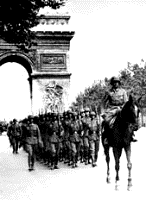 Germany took its revenge on France in May 1940, sweeping aside the French army and marching victoriously through Paris in a stunning repeat of its rapid victory of 1870-71. The following years of occupation were some of the darkest in French history. Heroic French resistance was tarnished by craven collaboration with the German occupiers. Germany re-annexed Alsace-Lorraine and exploited French resources to support the German war machine.
Germany took its revenge on France in May 1940, sweeping aside the French army and marching victoriously through Paris in a stunning repeat of its rapid victory of 1870-71. The following years of occupation were some of the darkest in French history. Heroic French resistance was tarnished by craven collaboration with the German occupiers. Germany re-annexed Alsace-Lorraine and exploited French resources to support the German war machine.
Following World War II, many of the victors were once again determined to impose harsh conditions on Germany in order to neuter its war-making ability. The immediate post-war French plan was to control the Saar and Ruhr, extract as much coal as possible in order to revitalize France's steel industry and export to markets left open by Germany's collapse. The French zone of occupation included the Saar, where France encouraged "independence" under French administration. The American Morgenthau Plan, proposed by Secretary of the Treasury Henry Morgenthau, Jr., reflected the bitterness that many on the Allied side felt towards the defeated Germans. The plan called for harsh reparations and severe food rationing. In order to permanently cripple Germany's industrial capacity, the plan called for the removal of all industrial equipment from and the sealing of iron and coal mines in the Ruhr and Saar. This entire area was to be converted into a permanently agricultural buffer zone.The Morgenthau Plan was never formally adopted, but it influenced American army of occupation policy and contributed to needless additional suffering and deaths in Germany. (Dietrich)
Fortunately, wise policymakers in the United States and France saw the need for a break from the conflict spiral that had dominated Franco-German relations since the mid-1800's. Three factors contributed to this shift. First, with World War II concluded, the United States needed a revitalized Europe as a market for American exports if the United States was to maintain its economic boom. Secondly, as tensions with the Soviet Union developed over post-war governance of Eastern Europe and the Korean Peninsula, a rebuilt, rearmed Germany became essential as the central pillar of Western European security. Lastly, a solution to the ongoing conflict between Germany and France was needed in order to guarantee stability and prosperity in Europe. The Marshall Plan, initiated in 1948 by the United States, went a long way towards achieving the first two goals, but the American government realized that the solution to the "German Question" had to come from Europe itself, particularly from France. The French pursuit of reparations and attempts to "internationalize" the Saar and Ruhr under French control, were gradually revealed as a fruitless repeat of past mistakes. France could not "Frenchify" the German populations of these areas, nor extract enough resources to pay for the occupation.(Dinan, 13-22)
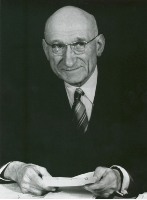 Gaining strength from interest in European federalism, the French government overcame opposition from revanchists and proposed what is known as the Schuman Declaration on 9 May 1950. The Declaration was proposed by the Lorraine-born French foreign minister Robert Schuman, based on a plan developed by the French reconstruction planning minister Jean Monnet. The plan offered a specific answer to the struggle for control of coal and iron: the formation of a supranational commission to regulate trade in the two vital war-making resources. Via this European Coal and Steel Community (ECSC), development and trade of coal and iron/steel would be determined by the market rather than national interest. This would increase efficiency in an industry vital to Europe's reconstruction, while defusing the national tensions created by competition for control of the resources. (Dinan, 22-41)
Gaining strength from interest in European federalism, the French government overcame opposition from revanchists and proposed what is known as the Schuman Declaration on 9 May 1950. The Declaration was proposed by the Lorraine-born French foreign minister Robert Schuman, based on a plan developed by the French reconstruction planning minister Jean Monnet. The plan offered a specific answer to the struggle for control of coal and iron: the formation of a supranational commission to regulate trade in the two vital war-making resources. Via this European Coal and Steel Community (ECSC), development and trade of coal and iron/steel would be determined by the market rather than national interest. This would increase efficiency in an industry vital to Europe's reconstruction, while defusing the national tensions created by competition for control of the resources. (Dinan, 22-41)
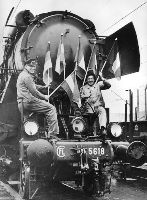 Tensions still existed after the institution of the ECSC. The status of the Saar was not concluded until 1957. German rearmament was fiercly opposed by France, but accepted with the safe anchoring of Germany in the North Atlantic Treaty Organization in 1955. It is also generally agreed that the ECSC did not directly contribute much to Europe's economic growth. Non-tariff barriers to trade and cartels still plagued the market. However, what the ECSC did achieve was a change in the way that the conflict over coal and steel was handled. The Schuman Declaration treated a defeated Germany as an equal partner and stressed the need for European solutions to the "German Question". The old game of punish the vanquished in the name of national interest had been proven too deadly to continue. The ECSC changed the context in which European affairs were conducted. Composed of France, Germany, Belgium, the Netherlands, Luxembourg and Italy, the ECSC was the practical expression of the European Movement's overly utopian quest for a united, federalized Europe. It placed the conflict between France and Germany over control of coal and steel into the broader European context, in recognition of the wider danger that the bilateral conflict held for all of Europe. (Dinan, 45-57)
Tensions still existed after the institution of the ECSC. The status of the Saar was not concluded until 1957. German rearmament was fiercly opposed by France, but accepted with the safe anchoring of Germany in the North Atlantic Treaty Organization in 1955. It is also generally agreed that the ECSC did not directly contribute much to Europe's economic growth. Non-tariff barriers to trade and cartels still plagued the market. However, what the ECSC did achieve was a change in the way that the conflict over coal and steel was handled. The Schuman Declaration treated a defeated Germany as an equal partner and stressed the need for European solutions to the "German Question". The old game of punish the vanquished in the name of national interest had been proven too deadly to continue. The ECSC changed the context in which European affairs were conducted. Composed of France, Germany, Belgium, the Netherlands, Luxembourg and Italy, the ECSC was the practical expression of the European Movement's overly utopian quest for a united, federalized Europe. It placed the conflict between France and Germany over control of coal and steel into the broader European context, in recognition of the wider danger that the bilateral conflict held for all of Europe. (Dinan, 45-57)
Conclusion:
What can we learn from the experience of France and Germany? The European Coal and Steel Community was the outcome of the practical consideration of how to achieve security through economic cooperation rather than a starry-eyed vision of utopian pan-European unity.The transformation in Franco-German relations from conflict over natural resources to cooperative trade of coal and steel reflects a parallel transformation in the way natural resources were viewed. The push of scarcity and the pull of surplus natural resources as a cause of war was replaced by the security of interdependent trade of these resources. In this way, the post-WWII Franco-German environment represents a conjunction, a period of extraordinary changes “that define new contexts of human behavior. Conjunctions locate the standard social context for years to follow and set into place structures and patterns of behavior that echo through many generations.”(Lee, 2005) While the primary cause of conflict between France and Germany was geopolitical, the solution lay in resolving the issue of natural resource competition. The ECSC was thus a first step into a new world.
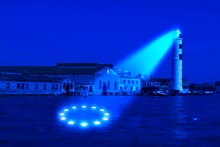 What does the experience of France and Germany provide in the way of lessons for other conflicts? Competition over natural resources, especially strategic resources vital to war-making such as oil, continues today. Wars in the Persian Gulf, the conflict over the Spratly Islands and to some degree the Falklands/Malvinas conflict fall into this category. In addition, conflict over resources deemed vital to national survival, particulary water, have already occurred and threaten to be the next great cause of warfare. The experience of the French and German case does not provide outright answers or a blueprint for the resolution or prevention of future conflicts. However it does provide interesting questions: is it necessary to fight devestating wars in order to achieve a "conjunction"? Is economic interdependence sufficient insurance against recidivism? Is an outside threat necessary to impel actors to seek accomodation? One thing is certain. With the increased deadliness of warfare, future actors in conflicts have a much smaller window of opportunity and a much greater need to learn quickly the lessons that it took France and Germany 75 years of conflict to learn.
What does the experience of France and Germany provide in the way of lessons for other conflicts? Competition over natural resources, especially strategic resources vital to war-making such as oil, continues today. Wars in the Persian Gulf, the conflict over the Spratly Islands and to some degree the Falklands/Malvinas conflict fall into this category. In addition, conflict over resources deemed vital to national survival, particulary water, have already occurred and threaten to be the next great cause of warfare. The experience of the French and German case does not provide outright answers or a blueprint for the resolution or prevention of future conflicts. However it does provide interesting questions: is it necessary to fight devestating wars in order to achieve a "conjunction"? Is economic interdependence sufficient insurance against recidivism? Is an outside threat necessary to impel actors to seek accomodation? One thing is certain. With the increased deadliness of warfare, future actors in conflicts have a much smaller window of opportunity and a much greater need to learn quickly the lessons that it took France and Germany 75 years of conflict to learn.
Begin year: 1870
Although the conflict over the territory goes back to the conquests of Louis XIV and Napoleon, only with the industrial revolution does the struggle for coal and iron resources truly begin to play a major role.
End Year: 1951
I choose the date of the signing of the Paris Treaty establishing the European Coal and Steel Community, signed in April 1951 as the "end" of the conflict, although it is not quite as neat as that. The Community did not become operational until August 1952. The status of the Saar was not resolved until 1957, with France exploiting the Saar's coal in the meantime. Few contemporary observers believed that the ECSC was the panacea for Franco-German conflict and it took years and many supporting events, including the establishment of the European Economic Community in 1957 to solidify the arrangement.
Duration: 75 years
Again, the need to choose particular dates for a beginning and end of a conflict reveals the ambiguity of the term conflict. Does conflict start in the hearts and minds of people or with a declaration of war? Does it end with a peace treaty or with the death of the generation involved? Does it have to be martial or could commercial takeover of another country's industry qualify?
Continent: Europe
Region: Western Europe
Country: France and Germany
Sovereign actors: France and Germany
Non-sovereign actors: trade unions, industry cartels
Competition for natural resources
Temperate
Place causing impact: France and Germany
Place Impacted: France and Germany, spreading throughout the world
International
Three interstate wars, with intervening periods of occupation involving small scale resistance, both violent (sabotage, assassination) and non-violent (strikes, civil disobedience).
Franco-Prussian War: 9 July 1870 – 10 May 1871
World War I: 1 August 1914 – 11 November 1918
World War II: 1 September 1939 – 14 May 1945
While the Franco-Prussian War was limited to France and Germany (Prussia), the two world wars included combatants and theaters of operations far removed from the Ruhr/Saar/Lorraine. I do not claim that the struggle for the natural resources of the Ruhr/Saar/Lorraine was the sole or even primary cause of the two world wars. However, competition between France and Germany for control of these areas played a major role, especially in post-war settlements and inter-war tensions.
Political, Military, Access to Resources, Border

FRANCO PRUSSIAN WAR (1870-1871)
Total killed: 200,000
Prussian: 50,000 killed, 89,200 wounded
French: 139,000 killed, 143,000 wounded
Civilian: fewer than 10,000 killed
Concluded in five months time and fought before the introduction of the machine gun, the Franco-Prussian war was not highly lethal. The higher French death toll is due in part to the large number of French prisoners taken by the Prussians. To soldier and civilian alike, the war’s primary killer was disease; ill-fed, poorly accommodated prisoners were especially vulnerable. Outbreaks of typhus and typhoid fever as well as dysentery accounted for approximately half of the war’s fatalities.
Civilian casualties are very hard to find figures for, but most estimates are below 10,000. These deaths are mostly French and mostly due to disease caused by the destruction of towns and pollution of water sources. Civilian casualties were highest around Paris, due to the length and intensity of the siege and the civil strife there. (Roth, 507-512)
The low mortality of the Franco-Prussian War, as well as the skill and ease of the Prussian victory, led observers to believe that efficient, well-trained and well-led armies could achieve national political objectives quickly and decisively with little cost to the victor. This lesson would inform the military doctrines of the next great European war, with disastrous consequences. (Howard, 453)
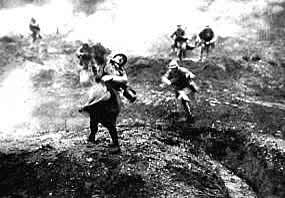
WORLD WAR I (1914-1918)
Total killed: 15.6 million
On the French and Belgian Front:
All Fronts:
During World War I the offensive military doctrines inculcated by the Franco-Prussian War threw masses of infantry against the nearly impregnable defenses of trenches, machine guns and massed heavy artillery. The result was the most terrible slaughter in a European war for over 300 years. 50% of those who served became either prisoner, wounded or killed. In France and Germany over 80% of men age 15-49 were mobilized for the war. By war’s end, ¾ of these young Frenchmen and ½ of the Germans would be dead, wounded, missing or prisoner.
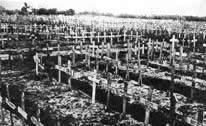 Civilian deaths were also high during World War I. However the above figure of 6.3 million civilian deaths includes an estimated 2 million in the Armenian genocide and the large numbers of civilians who died due to famine and disease in Russia and the Balkans. In Western Europe, the war was concentrated in the rural areas of Belgium and northern France and in the mountains of Austria/Italy, generally avoiding the bombardment or siege of cities and high loss of civilian lives.
Civilian deaths were also high during World War I. However the above figure of 6.3 million civilian deaths includes an estimated 2 million in the Armenian genocide and the large numbers of civilians who died due to famine and disease in Russia and the Balkans. In Western Europe, the war was concentrated in the rural areas of Belgium and northern France and in the mountains of Austria/Italy, generally avoiding the bombardment or siege of cities and high loss of civilian lives.
The carnage of World War I traumatized a generation of Europeans to the extent that many believed that war could never again happen in Europe. However, the ambiguous ending of the war in the West and the harsh conditions of the peace treaty that followed set the stage for the most deadly war yet experienced by mankind.
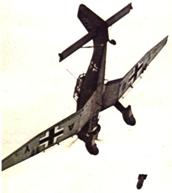
WORLD WAR II (1939-1945)
Total killed: 35 -50 million
French: 300,000 killed, 400,000 wounded (military only)
German (inc. Austria): 3.8 million killed, 5 million wounded (military only)
European nations: 13.8 million civilian and military deaths (excludes USSR) (Synder, 126)
Advances in armored vehicle technology and doctrine combined with air power to overcome the static trench warfare of World War I. World War II was a global war of mobility and high lethality, “total” war that targeted civilian populations for bombardment and extermination. Advances in technology permitted soldiers to fight in previously unimaginable conditions amid a maelstrom of high explosive. The societies and economies of the world’s greatest powers were mobilized for warfare, while the citizens of occupied nations resisted in the shadows.
About 8% of the German population was killed in the war; soldiers died on the battlefield and in prisoner of war camps, while most civilians were killed by the incessant allied aerial bombardment of German cities. Even though France was quickly out and belatedly back into the war, it suffered almost twice as many dead as the United States. About 1.5% of the French population died on the battlefield, in bombardments or in concentration and prisoner of war camps. Among other nations Greece lost 7% of its people, the USSR 10% and Poland 14%, including approximately 5 million Polish Jews.
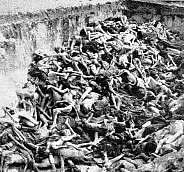 Unlike in World War I, where damage was mostly in the countryside, during World War II destruction was primarily in cities and transportation corridors. This, along with targeted killing, contributed to a higher number of civilian deaths. Massive physical destruction accompanied the human toll: in France more than 1 million buildings, 37,000km of railroad and ¾ of rolling stock were destroyed. In Germany 4 million buildings, 34,000km of railroad and 750 out of 948 bridges were destroyed. (Durand, 913-18)
Unlike in World War I, where damage was mostly in the countryside, during World War II destruction was primarily in cities and transportation corridors. This, along with targeted killing, contributed to a higher number of civilian deaths. Massive physical destruction accompanied the human toll: in France more than 1 million buildings, 37,000km of railroad and ¾ of rolling stock were destroyed. In Germany 4 million buildings, 34,000km of railroad and 750 out of 948 bridges were destroyed. (Durand, 913-18)
The massive death toll, horrible depravity of the concentration camps and ominous threat of nuclear destruction played a large part in convincing Europeans to strive to transcend interests based on militant nationalism and to seek cooperative solutions to problems. This would contribute to the “conjunction” that brought about the eventual resolution of Franco-German competition over the war-making resources of the Ruhr/Saar/Lorraine.
Direct - invasion into another country and possession of resources
Regional, with global implications,
Compromise - Both actors, France and Germany, experienced victory and defeat in the wars that they fought and in the political wrangling between the wars. In my interpretation, the conflict over war-making natural resources was not resolved until the formation and sucessful functioning of the European Coal and Steel Community.
no. 6 - JORDAN - an excellent review of the Israel-Jordan dispute over the River Jordan
no. 24 - SAHARA - the geopolitics and resource issues of Morocco's occupation of the Western Sahara
no. 108 - SENEGAL - MAURITANIA- the dispute over Senegal River water
no. 21 - SPRATLY - how a few islands and rumors of oil can cause a geopolitical storm
no. 18 - AOZOU STRIP - the lure of uranium and war between Libya and Chad
no. 30 - ANGOLA - diamonds and oil fuel a civil war
no. 14 - LITANI- the Israel-Lebanon dispute over the River Litani
no. 74 - IRANIRAQ - the fight over oil transit waterways
no. 59 - CEDARS - conflict over an ancient strategic resource: wood
Audoin-Rouzeau, Stéphane and Jean-Jacques Becker, eds. Encylopédie de la Grande Guerre 1914-1918 : Histoire et Culture. Paris : Bayard, 2004.
Berglund, Abraham. "The Iron-ore Problem of Lorraine.” The Quarterly Journal of Economics, 33, 3 (May 1919): 531-554.
Dietrich, John. The Morgenthau Plan: Soviet Influence on American Postwar Policy. New York: Algora Publishing, 2002.
Dinan, Desmond. Europe Recast: A History of the European UnionBoulder, CO: Lynne Rienner Publishers, 2004.
Durand, Yves. Histoire de la Deuxième Guerre Mondiale. Paris : Éditions Complexe, 1997.
Ellis, John and Michael Cox. The World War I Databook: The Essential Facts and Figures for all the Combatants. London: Aurum Press, 1993.
European Union website, accessed 28 July, 2005. http://europa.eu.int.
Gillingham, John. Industry and Politics in the Third Reich: Ruhr Coal, Hitler and Europe. New York: Columbia University Press, 1985.
Howard, Michael. The Franco-Prussian War. London: Routledge Press, 1961.
Lee, James. Responding to the Future:
Managing Environment and Conflict and
Surviving the Global Tipping Point during a Time of Changing Nations and National Interests
. Unpublished work, 2005.
Munro, John. The Spread of Modern Industrialization in the 19th Century: The ‘Slow Industrialization’ of France, 1789 – 1914, accessed 19 June, 2003. http://www.economics.utoronto.ca.
Real History website. Accessed 28 June 2005. http://www.fpp.co.uk/History/Stimson/Morgenthau_Plan.html.
Roth, François. La Guerre de 70. Paris: Fayard, 1990.
Soutou, Georges-Henri. L’Or et le Sang : Les Buts de Guerre Économiques de la Première Guerre Mondiale. Paris : Fayard, 1989.
Snyder, Louis L. Louis L. Snyder’s Historical Guide to World War II. Westport, CT: Greenwood Press, 1982.
Images
French and Imperial German flags courtesy of wikipedia.org
Maps courtesy of the University of Texas Libraries, The University of Texas at Austin.
Photo credits:
Mass Grave at Belsen Concentration Camp courtesy of the United States Holocaust Memorial Museum. Never forget.
German Attack WW1, German Cemetary at Bethune, French Troops Marching WW1and French Attack WW1 courtesy of the Great War Primary Documents Archive.
Robert Schuman, ECSC Coaltrain 1953 and EU Lighthouse courtesy of the Commission of the European Union Audio-Visual Services.
German Troops in Paris and German Stuka Divebomber courtesy of the United States Library of Congress.
Prussia Slaying France courtesy of Spartacus Educational.
German Coal Mine Works courtesy of Der-Foerderturm.
[Last updated 3 August, 2005]
Top of the Page